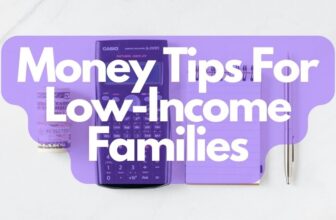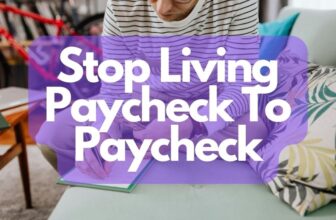
Strategies for Tackling High-Interest Debt
High-interest debt can feel like a heavy weight, constantly pulling you down and making it hard to achieve financial freedom. Tackling this kind of debt effectively requires strategic planning, discipline, and a bit of creativity. But don’t worry! This guide will walk you through practical steps and strategies to help you manage and pay off your high-interest debt while keeping the journey engaging and motivating.
Read also: How to Save for a Comfortable Future
Understanding High-Interest Debt
High-interest debt, often from credit cards, payday loans, and some personal loans, can be a financial nightmare. These debts accrue interest at alarming rates, making it challenging to pay down the principal balance. The key to effective debt management is to understand the nature of your debt, prioritize repayment strategies, and stay committed to your financial goals.
Steps to Manage and Pay Off High-Interest Debt
Step 1: Assess Your Debt Situation
Before you start tackling your debt, get a clear picture of your financial situation. Gather all your debt statements and list the following for each debt:
- Total balance
- Interest rate (APR)
- Minimum monthly payment
This helps you understand the magnitude of your debt and identify which debts are costing you the most in interest.
Step 2: Create a Budget
Creating a budget is essential for managing your finances and paying off debt. It might sound boring, but think of it as crafting a game plan for your financial success. Here’s how to create a budget:
How to Create a Budget
- List Your Income: Include all sources of income, such as salary, freelance work, and side gigs.
- Track Your Expenses: Record all your expenses over a month. Be thorough and include everything.
- Categorize Your Spending: Divide your expenses into fixed (essential) and variable (non-essential) categories.
- Set Spending Limits: Based on your income and expenses, set realistic spending limits for each category.
- Allocate Funds: Prioritize debt repayment by allocating funds to pay more than the minimum payment on your high-interest debts.
By creating and sticking to a budget, you’ll gain control over your finances and find ways to allocate more money toward debt repayment.
Step 3: Choose a Debt Repayment Strategy
There are several strategies to pay off high-interest debt. The two most popular methods are the Debt Avalanche and Debt Snowball methods. Choose the one that resonates with you and fits your personality.
Debt Avalanche Method
- List your debts from highest to lowest interest rate.
- Focus on paying off the debt with the highest interest rate first while making minimum payments on the others.
- Once the highest interest debt is paid off, move to the next highest, and so on.
- This method saves you the most money in interest payments over time.
Debt Snowball Method
- List your debts from smallest to largest balance.
- Focus on paying off the smallest balance first while making minimum payments on the others.
- Once the smallest debt is paid off, move to the next smallest, and so on.
- The psychological boost of paying off smaller debts can keep you motivated.

Step 4: Consider Debt Consolidation
Debt consolidation involves combining multiple debts into a single loan with a lower interest rate. This can simplify your payments and potentially save you money on interest. Here are a few ways to consolidate debt:
Balance Transfer Credit Card: Transfer your high-interest credit card balances to a card with a lower interest rate or a 0% introductory rate. Be mindful of balance transfer fees and ensure you can pay off the balance before the introductory rate expires.
Personal Loan: Take out a personal loan with a lower interest rate to pay off your high-interest debt. You’ll have a fixed repayment schedule and potentially lower interest costs.
Home Equity Loan or Line of Credit: Use the equity in your home to secure a loan with a lower interest rate. This option should be considered carefully, as your home is used as collateral.
Step 5: Negotiate with Creditors
You might be surprised at how open creditors can be to negotiating lower interest rates or more favorable repayment terms. If you have a good payment history, they may be willing to work with you to avoid losing you as a customer. Here’s how to approach it:
- Explain your situation honestly.
- Ask if they can offer a lower interest rate, waive fees, or set up a hardship payment plan.
A simple phone call can sometimes result in significant savings.
Step 6: Increase Your Income
Finding ways to increase your income can accelerate your debt repayment. Here are some ideas:
- Side Hustles: Take on a part-time job or freelance work in your spare time. Platforms like Upwork, Fiverr, and TaskRabbit offer various opportunities.
- Sell Unused Items: Declutter your home and sell items you no longer need or use on online marketplaces like eBay, Craigslist, or Facebook Marketplace.
- Ask for a Raise: If you’ve been with your employer for a while and have a strong performance record, consider asking for a raise. Prepare a solid case to present to your employer.
The additional income can be directly applied to your debt, helping you pay it off faster.
Step 7: Cut Expenses
Reducing your expenses can free up more money to put towards your high-interest debt. Here are some tips:
- Cancel Subscriptions: Cancel unused or unnecessary subscriptions and memberships.
- Cook at Home: Reduce dining out and prepare meals at home. Channel your inner chef and have fun experimenting with new recipes.
- Shop Smart: Use coupons, buy generic brands, and shop sales to save on groceries and other necessities.
- Reduce Utility Costs: Turn off lights when not in use, unplug electronics, and consider energy-efficient appliances.
Small changes in your spending habits can add up to significant savings over time.
Step 8: Use Windfalls Wisely
If you receive a windfall, such as a tax refund, bonus, or inheritance, use it to pay down your high-interest debt. While it may be tempting to spend this money on other things, using it to reduce your debt will have a long-term positive impact on your financial health.
Step 9: Avoid Accumulating More Debt
While paying off your current debt, it’s crucial to avoid accumulating more. Here are some strategies to help:
- Stop Using Credit Cards: Use cash or a debit card for purchases to avoid adding to your debt.
- Set Up an Emergency Fund: Save at least $1,000 for emergencies to avoid relying on credit cards.
- Stick to a Budget: Continue tracking your income and expenses to ensure you’re living within your means.

Step 10: Seek Professional Help
If you’re struggling to manage your debt on your own, consider seeking help from a credit counseling agency. These agencies can offer advice, create a debt management plan, and negotiate with creditors on your behalf. Look for a reputable, non-profit credit counseling agency accredited by organizations like the National Foundation for Credit Counseling (NFCC) or the Financial Counseling Association of America (FCAA).
Step 11: Monitor Your Progress
Regularly review your progress to stay motivated and make adjustments as needed. Celebrate milestones, such as paying off a debt or reducing your total debt by a significant amount. Use a debt tracking app or a simple spreadsheet to visualize your progress and stay on track.
Step 12: Learn from the Experience
Managing and paying off high-interest debt can be a challenging journey, but it’s also an opportunity to learn valuable financial lessons. Reflect on how you accumulated the debt and what changes you can make to avoid it in the future. Building better financial habits, such as budgeting, saving, and spending wisely, will help you maintain financial stability and avoid debt problems down the road.
Conclusion
Paying off high-interest debt requires a combination of strategic planning, disciplined budgeting, and sometimes creative solutions. By assessing your debt, choosing a repayment strategy, increasing your income, cutting expenses, and avoiding new debt, you can take control of your finances and work towards a debt-free future. Remember that the journey may be challenging, but the financial freedom and peace of mind you’ll gain are well worth the effort. Stay committed, seek help if needed, and celebrate your progress along the way. With determination and smart strategies, you can conquer your high-interest debt and pave the way for a brighter financial future.






